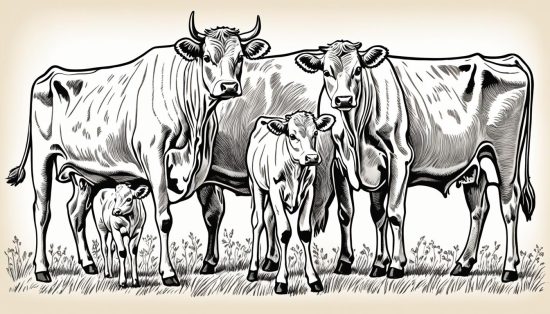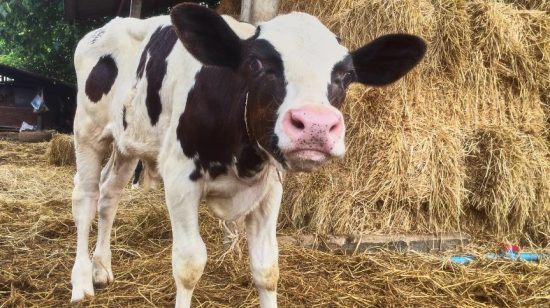How Many Stomachs Does a Cow Have? Exploring Bovine Digestion
Cows have a unique digestive system with four compartments, often referred to as “stomachs,” that allow them to efficiently break down tough plant matter.
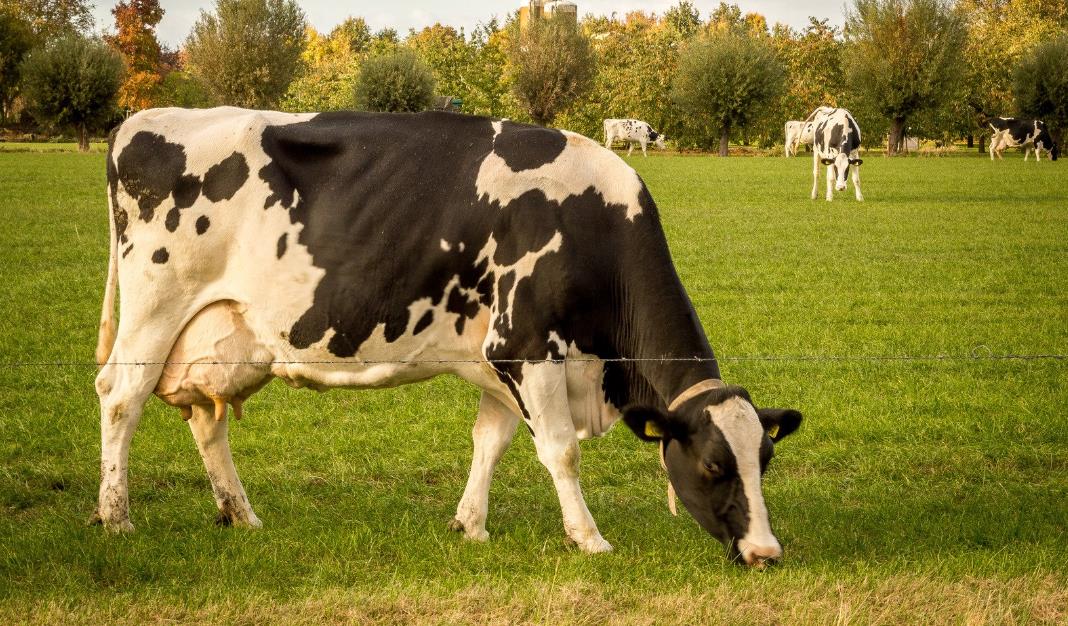
Did you know that cows have an astonishing 32,000 teeth throughout their lifetime? This remarkable statistic is just a glimpse into the intricate digestive system of these remarkable ruminants. Wondering how many stomachs does a cow has? We’ve got you covered. Cows have a unique digestive system with four compartments, often called “stomachs,” that allow them to break down tough plant matter efficiently.
Understanding the Cow’s Digestive System
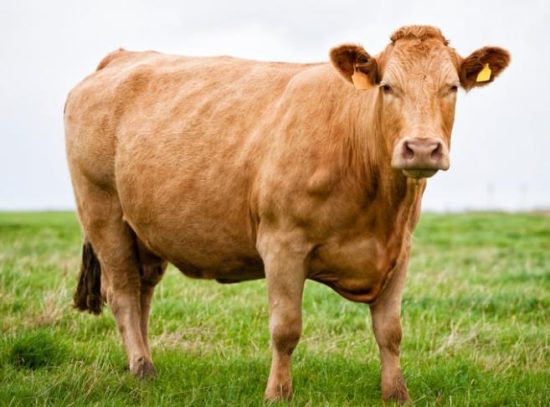
Contrary to popular belief, cows do not have four or seven stomachs. Rather, they possess a single stomach with four specialized compartments: the rumen, reticulum, omasum, and abomasum. Each of these compartments plays a distinct role in the cow’s complex digestive process, allowing it to efficiently break down and extract nutrients from its fibrous diet of grass and other plant materials. This unique structure gives the impression of multiple stomachs, but in reality, it is a single organ with highly specialized functions.
The idea that cows have multiple stomachs is a common misconception. This belief likely stems from the cow’s complex digestive system, which appears to have distinct compartments. However, these compartments are not separate organs but rather specialized chambers within a single, four-chambered stomach. Understanding the true nature of a cow’s digestive system can help dispel the myth of multiple stomachs.
Cows, like other ruminant animals, have a single stomach with four distinct compartments that work together to break down and digest their food. The rumen, reticulum, omasum, and abomasum each play a specific role in the cow’s complex digestive process, allowing them to extract nutrients from their grass-based diet efficiently. This specialized structure is what gives the impression of multiple stomachs, but in reality, it is a single organ with highly specialized functions that enable cows to thrive on a predominantly fibrous diet.
The Rumen: A Fermentation Powerhouse
The rumen, the largest compartment of the cow’s stomach, functions as a fermentation vat where billions of microorganisms work to break down the fibrous plant material that cows consume. These microbes, primarily bacteria, convert indigestible carbohydrates into simpler compounds that the cow can absorb, providing essential nutrients like B vitamins and vitamin K.
The large size of the rumen also allows cows to consume large quantities of grass, which is then further broken down through the process of rumination. This specialized digestive process, facilitated by the rumen’s extensive population of microorganisms, enables cows to efficiently digest how cows digest grass and extract essential nutrients from their forage-based diet.
The rumen’s walls are lined with tiny projections called papillae that increase the surface area for nutrient absorption, ensuring the cow can maximize the benefits of its specialized digestive system. This intricate structure of the rumen, combined with the rumen function and the activity of rumen microorganisms, allows cows to thrive on a diet predominantly made up of grass and other fibrous plant materials.
The Reticulum: The Honeycomb Structure
The reticulum, the second compartment of the cow’s stomach, is often referred to as the “honeycomb” due to its distinct honeycomb-like appearance. This compartment plays a crucial role in the process of regurgitation and rumination, where the cow brings up partially digested food (known as “cud”) from the rumen, re-chews it, and then re-swallows it. This allows the cow to further break down the fibrous plant material for more efficient reticulum function.
The reticulum also acts as a filter, trapping larger particles and foreign objects that the cow may have ingested while grazing. However, this compartment can be susceptible to various reticulum disorders, such as hardware disease, reticular abscesses, and rumen acidosis, which can impair the cow’s overall digestive health. The process of cow rumination is facilitated by the reticulum, which helps the cow bring up and re-chew the partially digested food. This allows the cow to break down the fibrous plant matter further, improving digestion and maximizing nutrient absorption.
Disorders Affecting the Reticulum

While the reticulum plays a crucial role in the cow’s digestive system, it can also be susceptible to various disorders. These include reticulum disorders such as hardware disease, where the cow ingests metal objects that become lodged in the reticulum, as well as reticular abscesses and rumen acidosis, which can impair the overall function of this compartment and negatively impact the cow’s digestive health.
The Omasum: Preparing for Further Digestion
The omasum, the third compartment of the cow’s stomach, plays a crucial role in the digestive process by facilitating the absorption of water, electrolytes, volatile fatty acids, and minerals from the partially digested food. This compartment’s unique layered structure, resembling an open book, helps to grind down the fibrous plant material and prepare it for further digestion in the fourth compartment, the abomasum.
The constant contractions of the omasum promote the efficient absorption of water and essential electrolytes, such as sodium, potassium, and chloride, from the partially digested food. This process ensures that the cow’s body maintains the appropriate fluid balance and electrolyte levels, supporting overall physiological functions and growth requirements.
The omasum’s layered structure, with its numerous thin leaves or “leaves,” helps to grind further and break down the fibrous plant material that has already been partially digested in the rumen and reticulum. This mechanical action prepares the food for more complete digestion and nutrient extraction in the abomasum, the cow’s true stomach.
By maximizing the absorption of water, electrolytes, and other essential nutrients, the omasum plays a vital role in the cow’s efficient utilization of its fibrous diet, which is predominantly composed of grass and other plant materials. This specialized function of the omasum is crucial for supporting the cow’s energy and growth requirements.
The Abomasum: The True Stomach
The abomasum, the fourth and final compartment of the cow’s stomach, is often called the “true stomach” due to its similarity to the monogastric (single-chambered) stomach found in humans and other mammals. In this compartment, stomach acids and digestive enzymes break down proteins and other components of the ingested material, preparing them for further absorption in the small intestine. The abomasum’s lining of glands produces the hydrochloric acid and enzymes necessary for this stage of abomasum function.
Stomach Acids and Enzyme Action
The stomach acids in the abomasum play a crucial role in the digestion process. These acids, along with the digestive enzymes, help to break down the various nutrients in the cow’s diet, including proteins, carbohydrates, and fats. This breakdown prepares the nutrients for absorption in the small intestine, ensuring the cow can efficiently utilize the essential components of its predominantly grass-based diet.
Potential Disorders of the Abomasum
While the abomasum’s specialized function is crucial, it can also be susceptible to various abomasum disorders, such as displacement or torsion. These conditions can negatively impact the cow’s overall digestive health, potentially leading to reduced nutrient absorption, decreased productivity, and even life-threatening complications if left untreated. Recognizing and promptly addressing any issues in the abomasum is essential for maintaining the overall well-being and productivity of dairy and beef cattle.
How Many Stomachs Does a Cow Have?
Contrary to popular belief, cows do not have four or seven stomachs. They have one stomach with four distinct compartments: the rumen, reticulum, omasum, and abomasum. Each of these compartments plays a specific role in the cow’s complex digestive system, allowing them to efficiently break down and extract nutrients from their fibrous diet of grass and other plant materials. This unique structure, with its specialized chambers, gives the impression of multiple stomachs, but in reality, it is a single organ with highly specialized functions.
The rumen, reticulum, omasum, and abomasum work together to enable cows to thrive on a predominantly grass-based diet, which other animals would struggle to digest effectively. By understanding the intricacies of this four-chambered stomach, we can appreciate the remarkable adaptations that have allowed cows to become such an essential part of sustainable food production.
The Benefits of a Specialized Digestive System
The cow’s specialized digestive system, with its four-compartment stomach, provides numerous benefits. The rumen’s ability to ferment and break down tough, fibrous plant materials allows cows to extract nutrients from sources that other animals cannot effectively digest. This includes agricultural by-products, such as seed coats, shells, and stems, that remain after grains have been harvested for human consumption.
By leveraging their specialized digestive system, cows can efficiently extract nutrients from indigestible plant matter, contributing to the benefits of cow digestion. This capability allows them to thrive on a diet predominantly made up of grass and other fibrous plant materials, which would otherwise be difficult for most animals to digest effectively.
By feeding agricultural by-products, such as seed coats, shells, and stems, to cows, farmers and businesses can reduce waste and generate additional revenue, while the cows can utilize these agricultural by-products to meet their nutritional needs. The cow’s ability to extract valuable nutrients from these otherwise indigestible materials contributes to more sustainable and cost-effective food production.
Chewing the Cud: A Unique Digestive Process
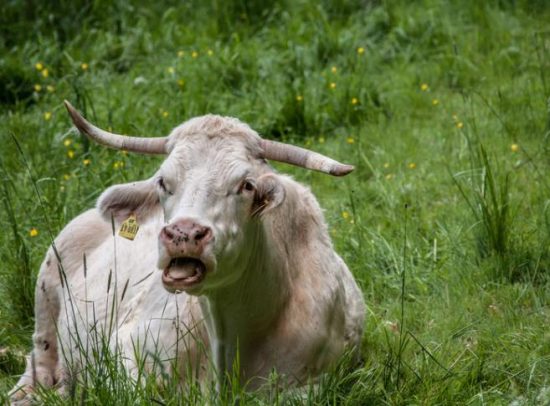
Cows have a unique digestive process known as rumination, or “chewing the cud.” After initially swallowing their food, cows will later regurgitate and re-chew the partially digested material, a process facilitated by the reticulum. This cow rumination allows the cows to further break down the fibrous plant matter, improving digestion and maximizing nutrient absorption.
The act of chewing the cud can take up to eight hours per day, demonstrating the significance of this step in the cow’s digestive system. By repeatedly chewing and re-chewing their food, cows are able to extract the maximum amount of benefits of rumination from their grazing, contributing to their overall health and productivity.
Anatomical Adaptations for Grazing
Cows have evolved unique anatomical adaptations that enable them to thrive on a diet predominantly made up of grass and other fibrous plant materials. Their cow dental structure, with incisors only on the bottom jaw and a hard, leathery pad on the top, allows them to effectively grasp and bite off clumps of grass.
Additionally, the side-to-side chewing motion of their molars helps to shred the tough plant matter into smaller pieces that are more easily digested. This specialized chewing mechanism is a crucial adaptation that allows cows to efficiently break down the cellulose and other complex carbohydrates found in their forage-based diet.
The cow’s copious saliva production also plays a crucial role in the digestive process. The saliva lubricates the food, helping it move smoothly through the digestive tract, and provides buffers to maintain the optimal pH levels for microbial fermentation in the rumen. This is essential for the proper functioning of the cow’s specialized four-chambered stomach, which is crucial for their ability to thrive on a diet predominantly made up of grass and other fibrous plant materials.
The Significance of Ruminant Livestock
Ruminant animals like cows play a vital role in sustainable food production and the agricultural industry as a whole. Their specialized digestive system allows them to convert indigestible plant matter, such as agricultural by-products, into nutrient-rich meat and dairy products that are essential for human consumption. Cows contribute to a more efficient and environmentally-friendly food system by utilizing these otherwise wasted materials.
Sustainable Food Production
The importance of ruminant livestock, particularly cows, in sustainable food production cannot be overstated. Cows’ ability to thrive on a diet predominantly made up of grass and other plant materials, which humans struggle to digest effectively, allows them to convert these resources into high-quality protein and essential nutrients. This process reduces waste and contributes to a more sustainable food system, where resources are utilized to their fullest potential.
Importance in the Agricultural Industry
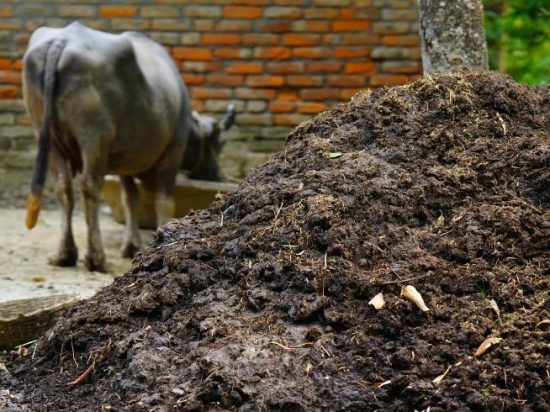
Cows and other ruminant livestock are a crucial component of a balanced and thriving agricultural ecosystem. In addition to providing nutrient-dense food products, the manure produced by cows can be used as a valuable fertilizer, further enhancing the sustainability of agricultural practices. This symbiotic relationship between cows and the land they graze on highlights the role of ruminant livestock in the overall agricultural industry, supporting a more efficient and ecologically conscious food production model.
FAQs on how many stomachs a cow has
Do cows have 4 or 5 stomachs?
Contrary to popular belief, cows do not have four or seven stomachs. Instead, they possess a single stomach with four distinct compartments: the rumen, reticulum, omasum, and abomasum.
What animals have 4 stomachs?
Ruminant animals like cows, sheep, and goats have a specialized digestive system with four compartments within a single stomach: the rumen, reticulum, omasum, and abomasum.
Has a cow got 3 stomachs?
No, cows do not have three stomachs. They have a single stomach with four specialized compartments: the rumen, reticulum, omasum, and abomasum.
Do cows have 4 stomachs true or false?
It is false that cows have four stomachs. Cows have a single stomach with four distinct compartments that work together to efficiently digest their fibrous diet.

